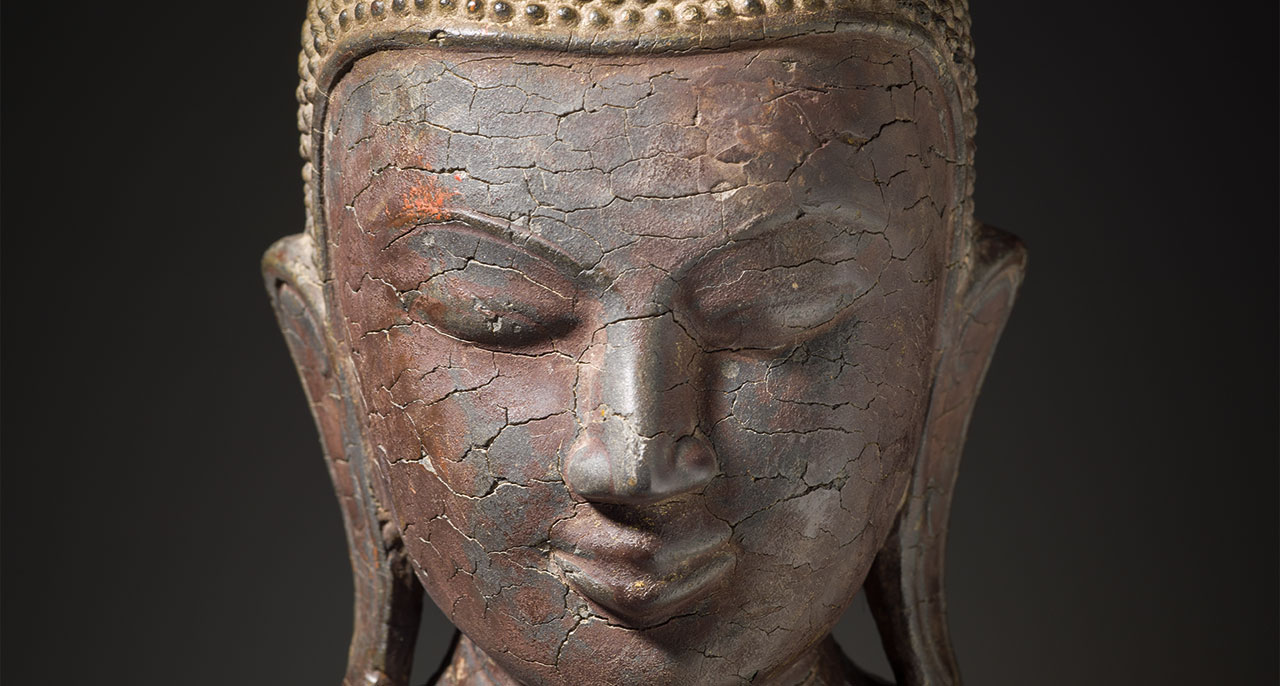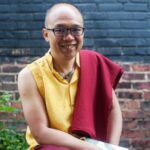As Buddhists, it is always appropriate to reflect on one of the most central acts in Buddhists’ lives: taking refuge. When we “go for refuge,” we are re-orienting our lives towards the Buddha, the Dharma, and the Sangha. Stating our commitment to the Three Refuges, also called the Three Jewels, is accepted by all Buddhists as the gateway to a life of dharma.
“To the Buddha, I go for refuge. To the Dharma, I go for refuge. To the Sangha, I go for refuge.” When these words are uttered with understanding and conviction, one enters the Buddhist path. At first, uttering this deceptively simple formula was enough to formally mark one’s transition from the life of an ordinary householder to that of a monastic. In time, the Buddha introduced more complex ceremonies for marking different levels of commitment, so “going for refuge” by formally repeating the three-fold refuge formula became the first step in committing oneself to the Buddha’s way.
“We must take the Dharma into our own experience until it becomes dharma as realization.”
Taking refuge in the Buddha begins with being inspired by the example of the 6th-century BCE Indian prince Siddhartha and remembering his beginnings. Siddhartha transformed himself from being under the power of the three poisons into a completely liberated and awakened being we call “buddha.” Under the schema of “outer, inner, and secret” often used in Tibetan Buddhism, this is the “outer” aspect of relying on the Buddha as refuge. The “inner” level is having confidence that we, too, can achieve liberation. The Buddha is also understood as a state of freedom from mental defilements that both you and I can achieve. When we turn to the Buddha with admiration, respect, and devotion, we start the journey of our own transformation from a state of confusion to clarity. “To the Buddha, I go for refuge” is thus less a prayer or supplication and more an anchor for right mindfulness. By remembering this potential, we enter the “secret” level of refuge in the Buddha. Here, our ultimate refuge is our own mind—naturally luminous and boundless but temporarily obscured.
The Buddha’s teaching, or Buddhadharma, becomes a refuge when we know how to “return to and rely on” it— or “guiyi,” the expression used in my native language, Mandarin Chinese, to mean “taking refuge.” Learning, practicing, and actualizing the Dharma isn’t adopting something anew or making one thing into something else. Instead, it is a reliance on what is real, the ultimate Dharma, the Dharma as realization. Often, we turn the Dharma into another set of beliefs and end up substituting one religion for another, replacing what we see as old rusty chains with exotic golden ones. But chains are still chains, and until we break these chains, we will never be free.
The Buddhadharma as refuge is the dharma that makes us awakened when we return to and rely on it. Somewhat cheekily, I often suggest to Buddhist audiences that instead of relating to what’s known as the “four noble truths” as “truths” (with a capital “T” even!), we should relate to the Buddha’s fundamental teaching as the “four noble rumors.” They are “noble” because the Noble One–the Buddha–taught this to the world for over 45 years. They are also “noble” because they ennoble those who realize them. Essentially, approaching them as “rumors” to be verified by ourselves rather than “Truths” to be believed is how the Buddha taught us to relate to his teachings. The Buddha’s invitation to approach his teachings critically and analytically is best expressed in the Pali phrase “ehipassiko,” which means, “Come and see!” Thus, the Dharma only becomes a refuge for us when we turn it from teachings and theories into realization and reality. We must take the set of teachings, the Dharma, into our own experience until it becomes dharma as realization.
The third of the three refuges is the Sangha. During the Buddha’s time, “sangha” was a term used by secular groups, such as craftsmen, referring to what we would call professional guilds. Perhaps in using the term “sangha,” the Buddha wanted to emphasize the voluntary nature of his monastic community rather than associating it with any sense of compulsion, duty, or responsibility that spiritual or religious communities tend to demand. Instead, there are neither commandments nor compulsions in the Buddha’s sangha. This Sangha is united by a common commitment to virtue.
In teaching us to seek out the sangha as refuge, the Buddha referred to “the noble sangha,” the monastic and lay individuals who have gained a glimpse of the true nature of existence. We rely on such individuals because they have traversed what we will be traversing and, thus, can serve as guides to us. Refuge in the sangha also refers to the conventional sangha, the community of monks and nuns that has been the main transmitters of the Buddhadharma from the Buddha down to us.
I invite you to utter the following words with conviction and understanding: “To the Buddha, I go for refuge. To the Dharma, I go for refuge. To the Sangha, I go for refuge.” This three-fold declaration of going for refuge in the Buddha, Dharma, and Sangha, at its core, is an act of choosing freedom: to be free temporarily and ultimately from the sufferings of confused, cyclic existence. With this, your journey of returning to and relying on the Three Jewels begins.


